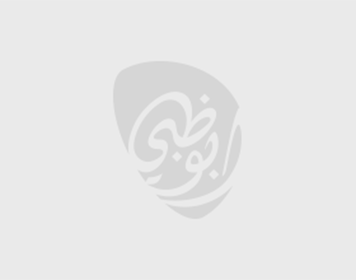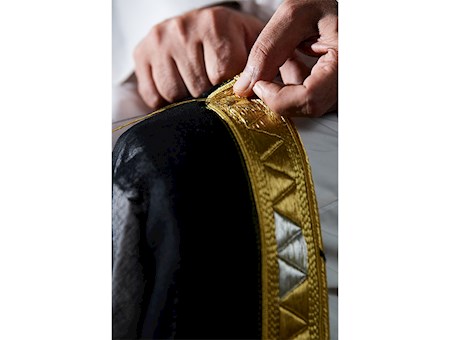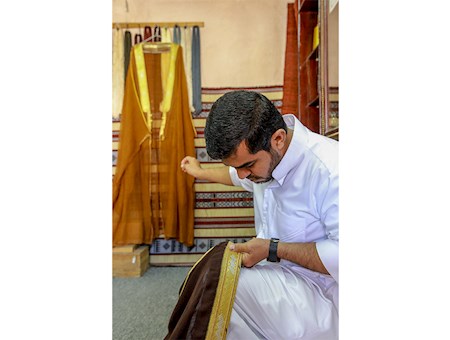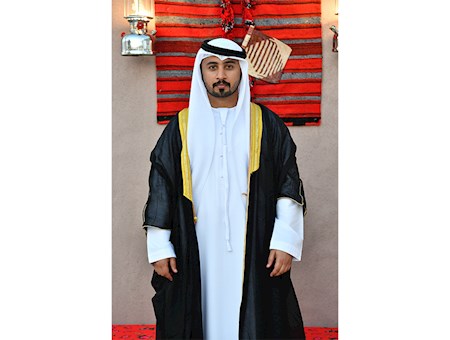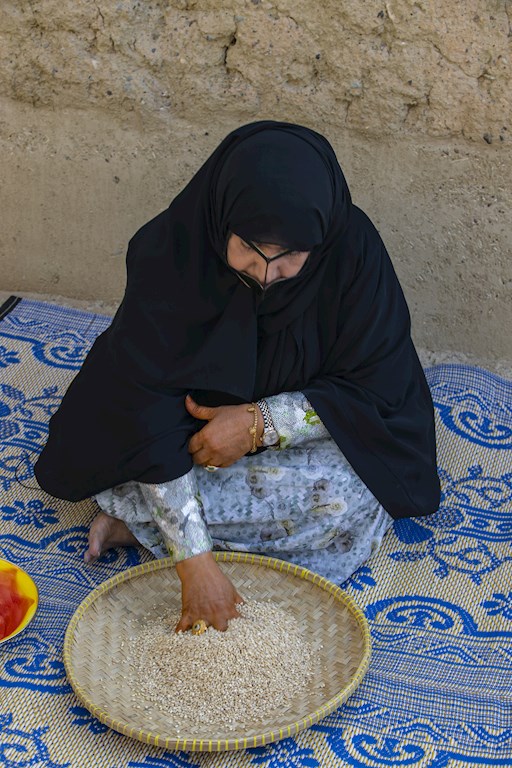Bisht (Men’s Outer Robe)
The men’s outer robe (bisht) is one of the traditional costumes in the countries of the Arabian Gulf, as they are worn by males of all ages above a thob or a dishdasha. The bisht holds a significant place in a man's attire, bestowing upon him dignity and modesty, rendering it indispensable for leaving one's home. However, as society has progressed, the bisht has become impractical for daily tasks and mobility. Consequently, it is now reserved for formal occasions, holidays, and festive gatherings, such as weddings.
Bisht Description
This is an outer robe for men, made of wool with embroidered edges. It is worn over clothes and extends to the feet, open at the front with two openings for the arms, but no sleeves. A bisht has several benefits, especially for travelers on foot in the desert, as it was traditionally used as a blanket or sheet at night. Travelers also used it as a tent in strong winds and as a jacket to conceal items.
Bisht’s are traditionally white, but today, colors include dark brown, black, light grey, golden yellow and khaki.
A summer bisht differs from a winter bisht according to the wool’s texture — light in summer and heavy in winter.
Names and Types of Bisht
A bisht is named according to the town or city in which it is made. The countries that are most famous for the weaving and embroidery of handmade bishts are Iraq, Syria, Saudi Arabia, Iran and Kuwait.
Bishts are categorized according to their origin and quality. The most important are:
- Najafi Bisht: Imported from the city of Najaf in Iraq. This is considered to be among the best and most luxurious types, due to its softness and the accuracy of the sewing. It is used in summer.
- Hasawi Bisht: This is next to the Najafi in terms of quality. It belongs to the Ahsaa region, from which it takes its name.
- Shami Bisht: Imported from Damascus in Syria, it is known for its excellent types. However, it can sometimes be of a cheap quality in terms of its textile and embroidery.
- Doranki Bisht: Imported from Iran, doranki is a Persian word that means 'bicolored' because the color of the bisht changes in the sun and the shadow.
- Nizwani Bisht: Named after the town of Nizwa in Oman. It is made of thick wool and it comes ready-tailored. It is also called the Omani Bisht.
- Indian Bisht: Known as the daffat joukh, it is thick as it is made of joukh. It was traditionally worn by merchants.
Tailoring the Bisht
In the past, bishts and outer robes used to be handmade by skilled men and women. A bisht is made of camel and goat wool, spun into a textile that can be mixed with cotton or silk threads. If a bisht loses its color, it is dyed again with a mixture of henna, pomegranate and walnut shells. Al-Ahsa, Bahrain, and Sharjah are famous for making bishts in the Gulf.
There are various tailoring methods for making a bisht.
The first is darbawiya, which is manual tailoring using original zari embroidery.
Various designs are used in the handmade tailoring and embroidery of the edges and include mandili, malaki, makatta’ and makassar.
In the past, an Arab man used to have one outer robe to wear in the summer and the winter, and did not change it for five years.
Now, people have many different kinds of outer robes.

